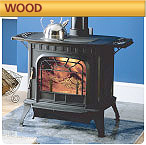
|
Maggie's FarmWe are a commune of inquiring, skeptical, politically centrist, capitalist, anglophile, traditionalist New England Yankee humans, humanoids, and animals with many interests beyond and above politics. Each of us has had a high-school education (or GED), but all had ADD so didn't pay attention very well, especially the dogs. Each one of us does "try my best to be just like I am," and none of us enjoys working for others, including for Maggie, from whom we receive neither a nickel nor a dime. Freedom from nags, cranks, government, do-gooders, control-freaks and idiots is all that we ask for. |

 A friend did the research on this topic for me, because we were both looking for something good, and we have tons of wood and hate paying our heating bills (I have oil heat and propane stoves).
A friend did the research on this topic for me, because we were both looking for something good, and we have tons of wood and hate paying our heating bills (I have oil heat and propane stoves).
Tracked: Oct 15, 09:37
We all must adapt! With Global Cooling hastening our certain death and doom by freezing to death, we offer this final post in our Winter in New England series. The prior posts in this annual series were: Winter in New England, Part 1: Lamp
Tracked: Oct 28, 12:32
We all must adapt! With Global Cooling hastening our certain death and doom by freezing to death, we offer this final post in our Winter in New England series. The prior posts in this annual series were: Winter in New England, Part 1: Lamp
Tracked: Oct 28, 12:35